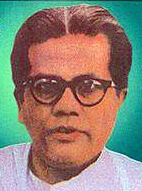Introduction
Sati Joymoti is a legendary figure in Assam’s History, known for her immense sacrifice, unwavering patriotism, and extraordinary courage. Unlike many historical figures whose sacrifices were limited to personal causes, Joymoti laid down her life not just for her husband but for the betterment of society, resisting oppression and ensuring the rise of a just ruler. Her story is a rare and inspiring tale of selfless devotion that continues to resonate even today.
Who Was Sati Joymoti?
Sati Joymoti, also known as Joymoti Konwari, was the wife of Ahom prince Gadapani, who later became King Gadadhar Singha. She was born in 1642 in a small village called Mechagarh Maduri, about 9 km from present-day Sivasagar, Assam. She belonged to the noble Ahom family, with her father, Lai Thepena Borgohain, being a high-ranking official.
The Political Turmoil of 17th Century Assam
During Joymoti’s time, Assam was in a state of chaos due to the misrule of Sulikphaa, also known as Loraa Roja (the Boy King). He was placed on the throne by powerful ministers, but his reign was marked by tyranny, corruption, and the persecution of noble families. To eliminate potential threats, Sulikphaa ordered the execution of all Ahom princes who could claim the throne.
The Sacrifice of Sati Joymoti
The Sacrifice of Sati JoymotiHer sacrifice was not just for her husband’s safety but for a greater cause—the restoration of a just and stable kingdom. Eventually, Joymoti succumbed to the brutal torture on March 27, 1680 AD.
The Legacy of Joymoti
Joymoti’s martyrdom was not in vain. A year after her death, Gadapani returned, overthrew Sulikphaa, and became King Gadadhar Singha in 1681 AD. Under his rule, Assam saw a period of stability, justice, and prosperity. He honored his wife’s sacrifice by naming their son Rudra Singha, who later became one of the greatest Ahom kings.
The Creation of Joysagar Tank
In 1697 AD, King Rudra Singha dug Joysagar Tank at Jerenga Pathar, the place where his mother was tortured. Spanning 318 acres, Joysagar is the largest man-made tank in India and stands as a timeless tribute to Sati Joymoti.
Joymoti’s Influence on Assamese Culture
Joymoti’s story is not just a historical tale; it has deeply influenced Assamese literature, films, and traditions. Notably:
- The First Assamese Film, “Joymati,” was made in 1935 by Jyoti Prasad Agarwala, bringing her story to the big screen.
- Her life continues to be celebrated in folk songs, plays, and academic discussions.
- Assam observes Sati Joymoti Divas on March 27 every year to honor her legacy.
Why is Sati Joymoti’s Sacrifice Unique?
Unmatched Resilience
Many historical figures are remembered for their bravery, but Joymoti’s endurance of 14 days of continuous torture without breaking her silence is a rare act of resilience in world history.
A Selfless Cause
While many sacrifices are made for personal or familial reasons, Joymoti’s was for the greater good of the kingdom.
Role in Assam’s History
Unlike many historical queens who influenced politics from behind the scenes, Joymoti played a direct role in shaping Assam’s future, making her a truly exceptional figure.
Conclusion
Sati Joymoti is not just a historical figure but a symbol of unwavering devotion, patriotism, and courage. Her sacrifice was not merely for her husband but for a kingdom struggling under oppression. Her legacy remains a source of inspiration, reminding us of the power of determination and the impact of selfless service.
Her story is not just Assam’s pride but a rare chapter in world history, proving that true bravery lies in standing firm in the face of injustice. Every year, Sati Joymoti Divas is observed in Assam, ensuring that her sacrifice is never forgotten.
Her life teaches us a powerful lesson: courage and integrity can change the course of history.
FAQ’s:
Q 1. Who was Sati Joymoti?
Sati Joymoti was a brave Ahom princess who sacrificed her life to protect her husband, Gadapani, and helped in establishing a just and peaceful kingdom.
Q 2. Why is Joymoti called ‘Sati’?
She is called ‘Sati’ because of her unwavering devotion to her husband and her ultimate sacrifice to protect him and the Ahom kingdom.
Q 3. What happened to Sati Joymoti?
She was captured by the soldiers of Loraa Roja (Sulikphaa) and tortured for 14 days at Jerenga Pathar for not revealing her husband’s whereabouts. She died due to the severe torture.
Q 4. How did Joymoti’s sacrifice help her husband, Gadapani?
Because of Joymoti’s sacrifice, Gadapani remained safe in hiding. Later, he overthrew Loraa Roja and became King Godadhar Singha, restoring peace in Assam.
Q 5. Who built Joysagar Tank and why?
Rudra Singha, the son of Joymoti and Gadapani, built Joysagar Tank in 1697 AD at the place where his mother was tortured, as a tribute to her sacrifice.
Q 6. Where was Joymoti born?
Joymoti was born in a village called Mechagarh Maduri, near Sivasagar, Assam.
Q 7. What is the significance of Sati Joymoti Divas?
Sati Joymoti Divas is observed on March 27 every year in Assam to honor Joymoti’s courage, sacrifice, and patriotism.
Q 8. What is the first Assamese movie based on Joymoti?
The first Assamese movie, Joymoti, was made in 1935 by Jyoti Prasad Agarwala and tells the story of her sacrifice.
Q 9. What values does Joymoti represent?
Joymoti represents bravery, loyalty, self-sacrifice, and patriotism, making her a legendary figure in Assam’s history.
Q 10. Where is Jerenga Pathar, and why is it important?
Jerenga Pathar is located in Sivasagar, Assam. It is the place where Joymoti was tortured and sacrificed her life, making it a historical site of great importance.












